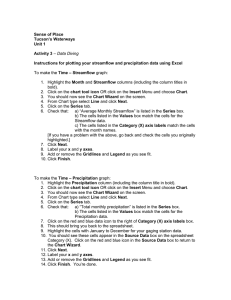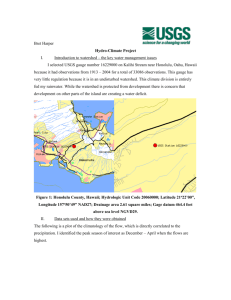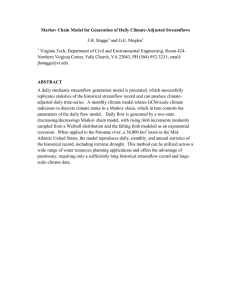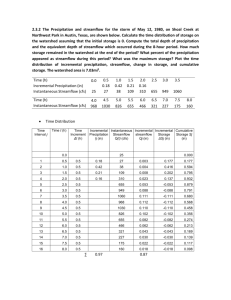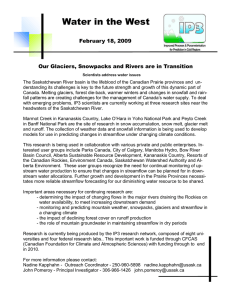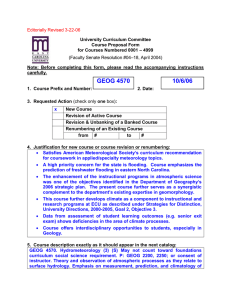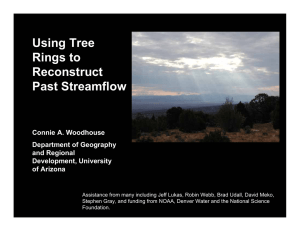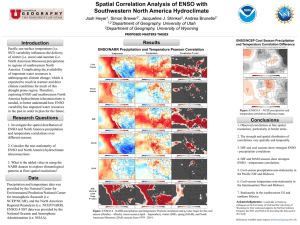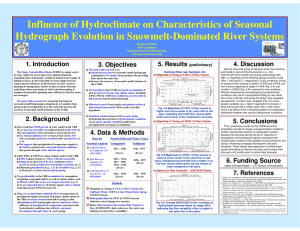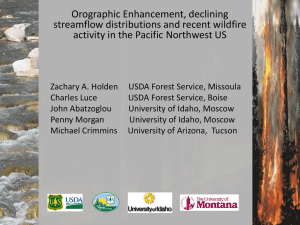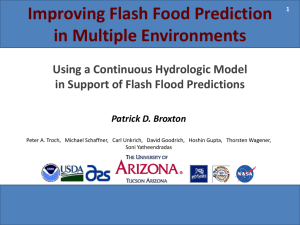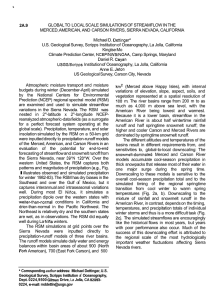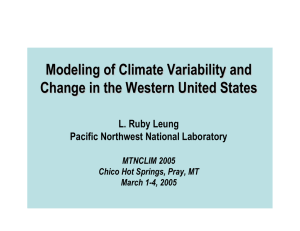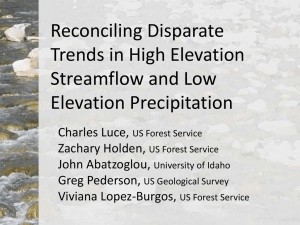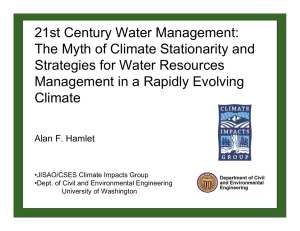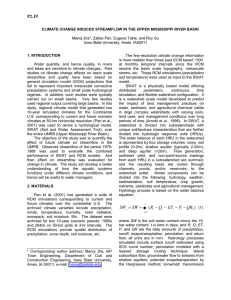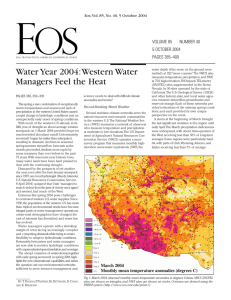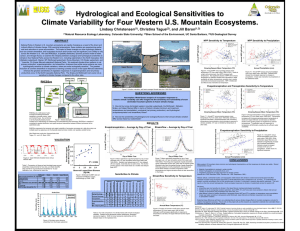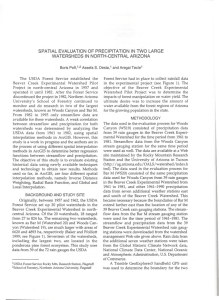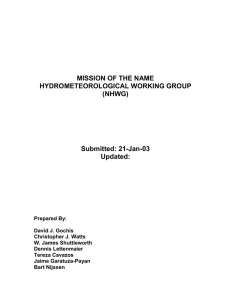! "# $
advertisement
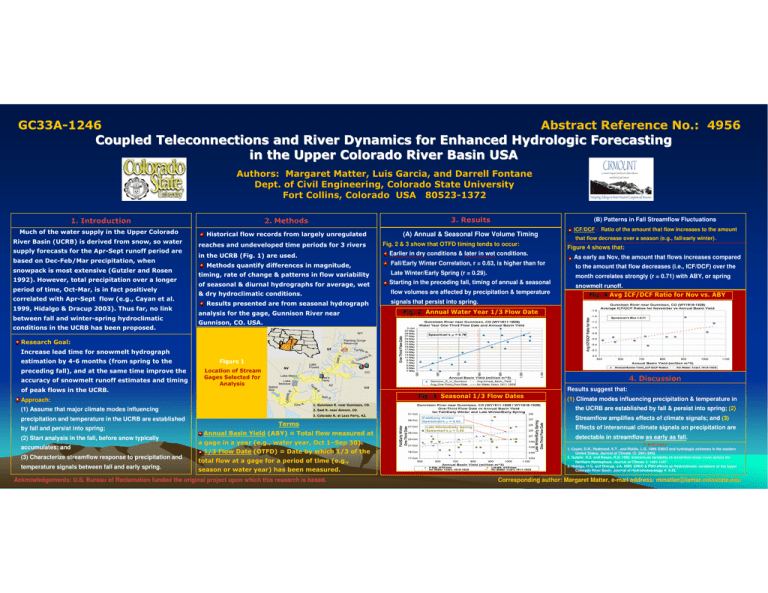
! "# $ %& ! + & * & " - ( ! % ( 1 ) > - & & . ! + /* +0 # & * ! $ & " . # ) 3 .1 4 ! / 5 ! $ 16 - 1' 1 ( 7" . / (1 1 ( &# $ + /)( & ? & 7 #&# $ ( ( 7 Fall/Early Winter Correlation, r = 0.63, is higher than for 1 .! ( & ! # # Late Winter/Early Spring (r = 0.29). Starting in the preceding fall, timing of annual & seasonal ( 1. flow volumes are affected by precipitation & temperature $ $ 3 Fig. 2 & 3 show that OTFD timing tends to occur: ! Earlier in dry conditions & later in wet conditions. &# ( " ) * ! # = (A) Annual & Seasonal Flow Volume Timing ( $ # (1 ( ) (B) Patterns in Fall Streamflow Fluctuations ( # 0 7 # 88 0 & . & * $ ( ! # , . - $ ! & * *, 1 , <8 & . & 1.& 0' . ! 1 . & . , 2- $ ' 19 (1 '# *, &# & ((1 ( & signals that persist into spring. )( ! C @ ICF/DCF = Ratio of the amount that flow increases to the amount that flow decrease over a season (e.g., fall/early winter). Figure 4 shows that: As early as Nov, the amount that flows increases compared to the amount that flow decreases (i.e., ICF/DCF) over the month correlates strongly (r = 0.71) with ABY, or spring snowmelt runoff. )( !( > )2" ) !! +@ 2 ) ." 1 6 *, +& & > $ $ # ( 01 # 3 .$ $ & / & .$ . & * &# $ $ ( ( $ $ $ * & & )( ! & $ ( 9 , ( : $ , " # Results suggest that: + )( Approach: 1 6 (1) Assume that major climate modes influencing % precipitation and temperature in the UCRB are established accumulates; and (3) Characterize streamflow response to precipitation and temperature signals between fall and early spring. 1 6 9 ) #1 ; $ by fall and persist into spring; (2) Start analysis in the fall, before snow typically $ + (( @ # 2 ) ." . . / +@0A / ( 1. /6 )"0A " (( # # #.& & 2 $ 0& B, $ Acknowledgements: U.S. Bureau of Reclamation funded the original project upon which this research is based. / (1 2 ) ." (1) Climate modes influencing precipitation & temperature in the UCRB are established by fall & persist into spring; (2) Streamflow amplifies effects of climate signals; and (3) Effects of interannual climate signals on precipitation are .$ 16 , 80 & detectable in streamflow as early as fall. 5. References 1. Cayan, D.R., Redmond, K.T., and Riddle, L.G. 1999. ENSO and hydrologic extremes in the western United States. Journal of Climate 12: 2881-2893. 2. Gutzler, D.S. and Rosen, R.D. 1992. Interannual variability of wintertime snow cover across the Northern Hemisphere. Journal of Climate 5: 1441-1447. 3. Hidalgo, H.G. and Dracup, J.A. 2003. ENSO & PDO effects on hydroclimatic variations of the Upper Colorado River Basin. Journal of Hydrometeorology 4: 5-23. Corresponding author: Margaret Matter, e-mail address: mmatter@lamar.colostate.edu
